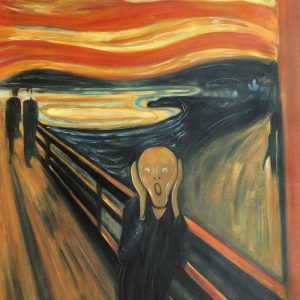
Alexander Ewers
Art in Motion is a creative dance performance by the junior members of Adelaide Entertainment Group. The goal is ambitious and admirable: using the medium of dance to explore some of the epochs of art evolution, and to extrapolate on key moments and movements in the history of art. It is a refreshing attempt at marrying art forms and thereby celebrating both the individual and combined wonders of each,. Whilst falling a little shy of this mark, it remains a mesmerising and whole-hearted dance performance.
Following a loosely chronological journey, Art in Motion utilises a multimedia approach to express and harness the spirit of 8 art periods. The group dance against a backdrop of projected images and animations featuring core works from the relevant periods. Combined with a carefully curated musical score, the resultant audiovisual montage is indeed impressive. The choreography fluctuates between solo and ensemble items, each with an undiluted emphasis on the art of movement itself, thus allowing for a minimum of props.
The collective choreography did feel a little discohesive initially and one struggled at times to find tenable links between the choreographic energy projected, and the tone of the audiovisual and artistic context. However, early falterings ceded to a more fluid, professional and settled atmosphere, thanks in no little part to the influence of Alix Kuijpers. As one of the lead dancers, he injected an abandon, a passion, a visceral dynamism into his central role, and this vitality proved a contagious and steadying barometer elevating the performance of each of his colleagues. The momentum continued to build progressively, producing some truly powerful performances. The sequences devoted to surrealism, pop-art and minimalism were particularly memorable, the imagery and atmosphere created on-stage coalescing perfectly with both soundtrack and the zeitgeist of these artistic epochs.
Art in Motion sets itself a high bar: that of turning the amplifying lens of art, onto art itself. The execution falls short of a convincing and consistent intersection between the painted medium and that of dance whereby one is directly illuminating the other. However it does afford a mirror experience, an opportunity to sit and reflect about the greater universe of art through two parallel vehicles. It is about art reflecting art; it is about ways of interpreting; it is about the eternality of art. And in this, the performance touches on a rare truth. Art is NOT static. It is NOT simply historic. Art is in motion.
Kryztoff Rating 3.5


Recent Comments